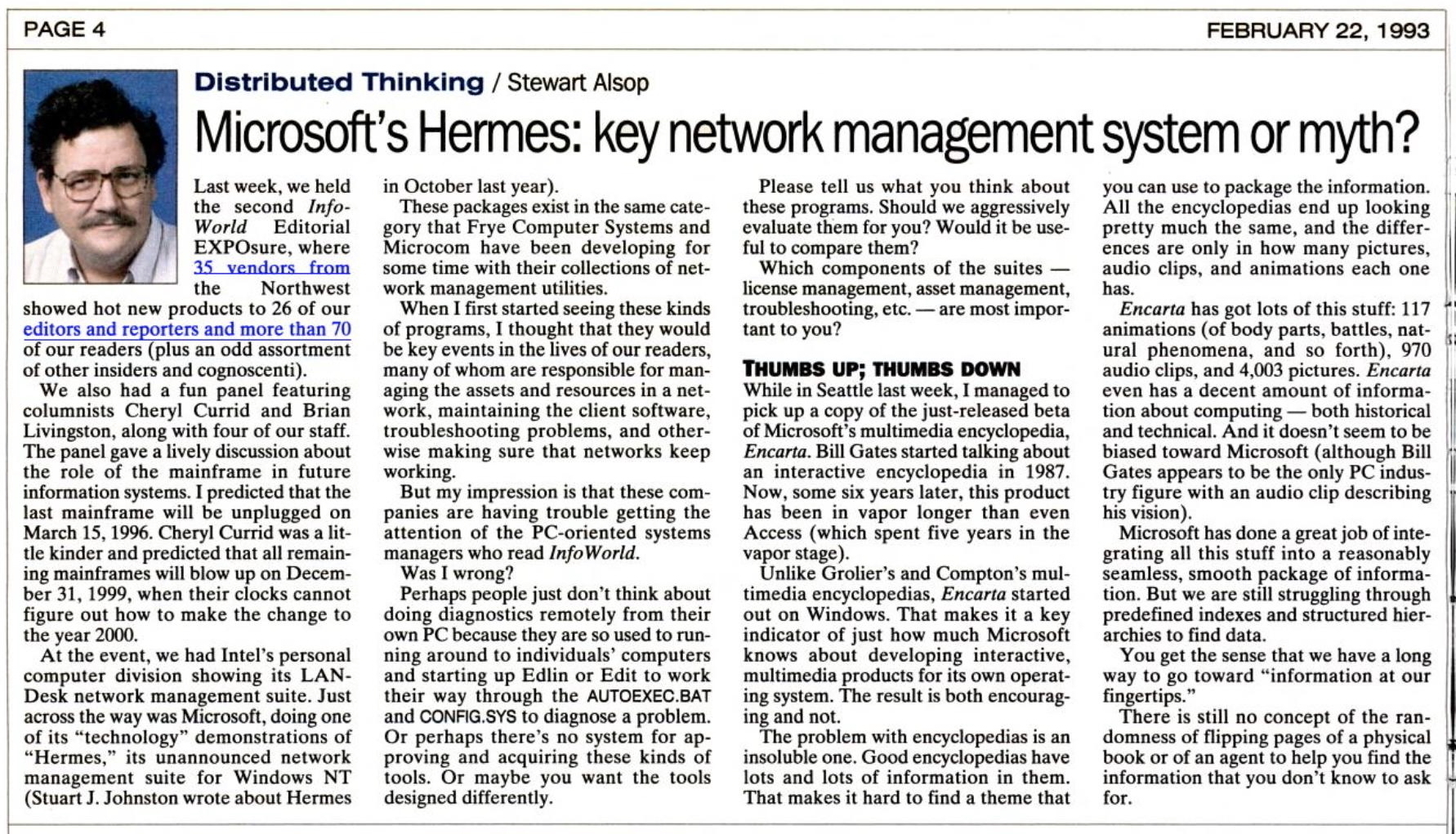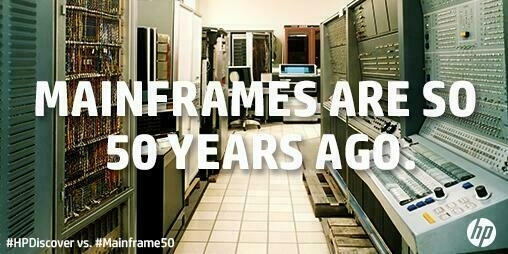Mainframe retirement
Finding the Death of the Mainframe

I came across a blog post (Wayback Machine link) discussing the 50th anniversary of the IBM System/360, and it mentioned a prediction about the so-called “death of the mainframe.”
I had seen the photo before, of Stewart Alsop literally eating his words “Death to the Mainframe” with a knife and fork, but I had not seen the original quote in print, and I couldn’t find a citation.
Back issues of InfoWorld magazine are online at Google Books, but searches there were not helpful. I kept finding references to the prediction, but not the original statement itself.
Then I happened across this forum discussion about the “Death of the Mainframe” on Google Groups, and one of the members noted that the original statement did not happen in the InfoWorld magazine, but at a conference.
The first reference in print to the death of the mainframe by Alsop is in the February 22, 1993 issue of InfoWorld magazine on page 4. The article reads:
Last week, we held the second InfoWorld Editorial EXPOsure, where 35 vendors from the Northwest showed hot new products to 26 of our editors and reporters and more than 70 of our readers (plus an odd assortment of other insiders and cognoscenti).
We also had a fun panel featuring columnists Cheryl Currid and Brian Livingston, along with four of our staff. The panel gave a lively discussion about the role of the mainframe in future information systems. I predicted that the last mainframe will be unplugged on March 15, 1996. Cheryl Currid was a little kinder and predicted that all remaining mainframes will blow up on December 31, 1999, when their clocks cannot figure out how to make the change to the year 2000.

Reference for the magazine article:
Alsop, Stewart. “Microsoft’s Hermes: key network management system or myth?” Distributed Thinking, InfoWorld magazine. February 22, 1993. page 4. (article available on Google Books)
(Revised and republished March 30th, 2025)
Mainframes are so 50 years ago

I came across this tweet as an advertisement in my own Twitter feed. It’s meant to be ironic, mainframes are still around, it’s more so the way they’re perceived that’s changed.
twitter.com/hpdiscover/status/453556126043615232 (Twitter links no longer available)
The comments are funny too:
@HPDiscover
this is SO not true. Shame on you HP.
#bigdata
— Camila Caldas (@camilaclbcaldas)
April 8, 2014
@HPDiscover
Another one who will eat his words about the death of the Mainframe. Here we go again !!! Have u even watched Matrix ? LOL!! — DD (@Cojinua77)
April 9, 2014
(Revised and republished April 2nd, 2025)
Careers and Digital Lifespans
Campus digital workhorse running final laps after 35 years (Wayback Machine link), by Barbara Palmer, Stanford Report, 2003:
The remarkable thing is not that the mainframe will be retired -- the 35-year-old system is "like a jet slowly losing its engines," said Dick Guertin, a software developer who has worked at Stanford since 1970. What is amazing, say those whose work lives have spanned much of the computer revolution, is that the mainframe system and the ground-breaking applications designed here to run on it have held up so well for so long.
At its peak, there were 30,000 accounts, including noncampus users, on the mainframe. Some of what McWilliam is doing requires real detective work, since many of the people who opened the accounts have long ago left Stanford or retired.
Also – Forsythe Mainframe Retirement (Wayback Machine link):
The mainframe era officially ended on December 15, 2003 when the last of the mainframe accounts was closed down.
(Revised and republished April 2nd, 2025)
It was physically demanding labor
Hello, Goodbye - CDS Bids Farewell to Mainframe, Ushers in New Beginning
In 1998 the Catalog Distribution Service of the Library of Congress shutoff its mainframe computer and switched to a new system.
During the 1970s, the mainframes were used primarily to print catalog cards, which CDS once produced by the tens of millions. In those early days, as many as 30 staff members were required simply to service the units, performing such tasks as changing tape reels, threading tape and programming. "It was physically demanding labor," said Mr. Billingsley.
(Revised and republished April 2nd, 2025)